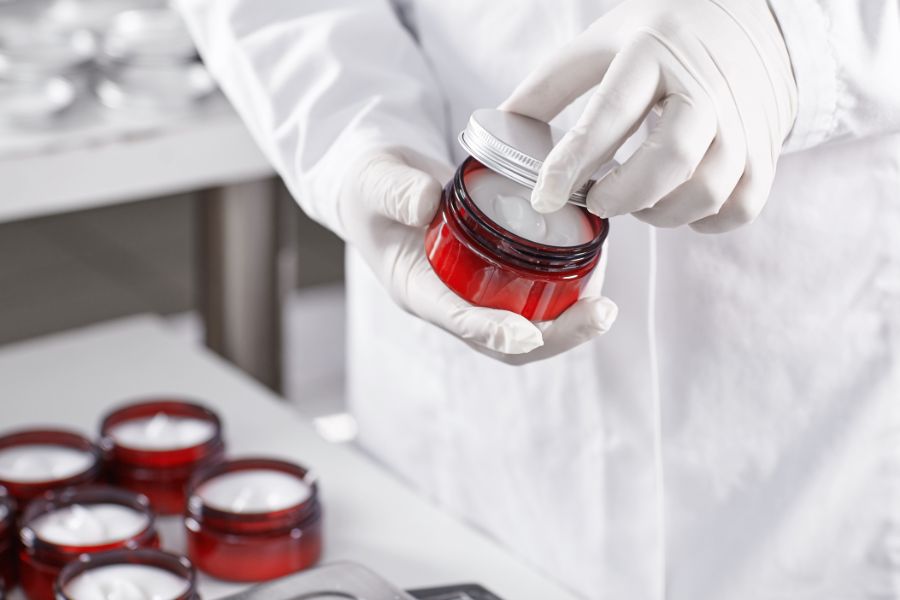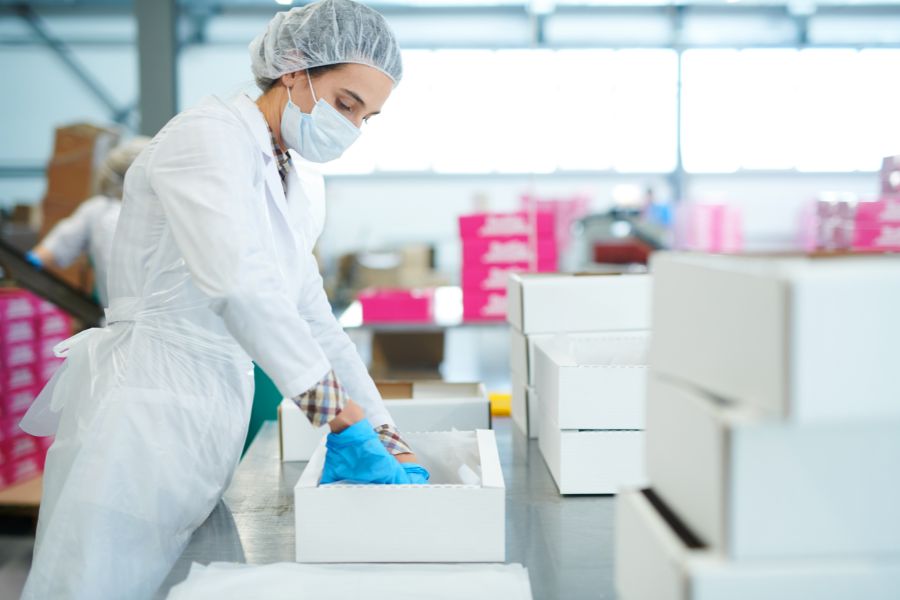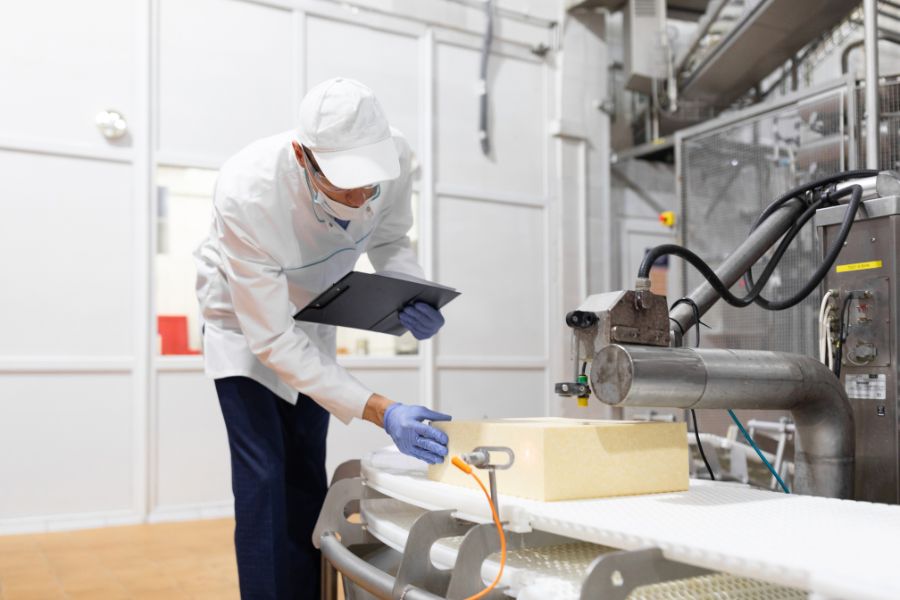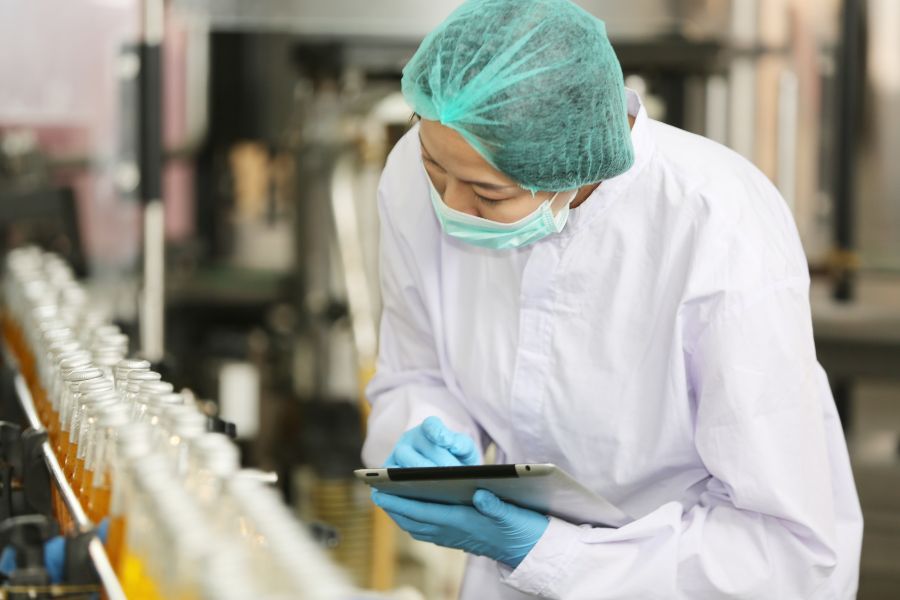KNOWLEDGE
A Comprehensive Guide to Packaging Testing Methods
Packaging testing exposes your packaging to various stressors such as drops, vibrations, compression, and environmental conditions. It is essential to consider these interactions at each level of packaging to ensure that the primary, secondary, and tertiary layers work harmoniously together to protect the product throughout its journey.

In this guide, we’re focusing exclusively on primary packaging, which contains the product itself, and secondary packaging, which is the outer packaging that multiple units of product are shipped in such as corrugated boxes. However, it should be noted that the secondary packaging can also consist of containing a single product in packaging such as a chipboard carton or a plastic clamshell for additional protection and marketing purposes. Packaging can be susceptible to crushing or other forms of damage during transportation and at other points in the production process. Furthermore, different types of packaging are prone to damage based on the specific conditions they encounter throughout the shipping process. In this guide, we’ll provide a comprehensive overview of the different methods utilized to test your packaging.
Why is Packaging Testing Important?
Packaging testing is imperative as it ensures that the selected packaging is not only compatible with your products through a variety of environmental changes but also capable of protecting the product when accidentally dropped or roughly handled during shipping and storage. Comprehensive packaging testing assists in determining how well your product performs under specific conditions such as heat, cold, shelf-life, drops, and transportation.

How Does Package Testing Work?
For any business involved in shipping and receiving products, it’s crucial to ensure the safety and undamaged arrival of their shipped components to the best of their ability. This is particularly important when dealing with delicate items like medical devices and food, regardless of whether they are transported to nearby destinations or around the world. Packaging testing plays a pivotal role in ensuring these products can withstand their journey and arrive without damage as often as possible.
1. Establish Testing Objectives
Defining objectives for primary packaging testing is essential in ensuring the overall quality and safety of products within the supply chain. Primary packaging tests factors such as proper sealing, preservation, and ease of use. Your product composition will narrow down your options for primary packaging since not all packaging materials are compatible with every product. Secondary packaging, which includes corrugated shipping boxes that transport the primary packages, focuses on assessing how protected the product inside is. By establishing clear testing objectives for both primary and secondary packaging, businesses can effectively uphold product integrity, regulatory compliance, and consumer satisfaction from the time of production to the end user. Establishing a Packaging Quality Control Checklist is a great place to start.
2. Select Test Methods
After establishing objectives, you’ll want to select the testing methods you’re going to use for your packaging materials. The goal is to make sure the products inside reach the end-user without damage, therefore, you’ll want to consider your materials and testing methods thoughtfully. Below is a list of some examples of different testing methods utilized in testing primary and secondary packaging.

Primary Packaging Testing Methods:
-
Compatibility Testing: This tests the compatibility of the primary packaging material with the product to ensure no interaction can compromise product quality. For example, pharmaceutical products must not interact with their packaging in a way that affects their efficacy.
-
Seal Integrity Testing: Assesses the sealing strength and integrity of closures, caps, and seals on individual product packaging. Methods like visual inspection, and vacuum decay tests help ensure that products remain properly sealed to prevent contamination or spoilage.
-
Barrier Property Testing: This method evaluates the packaging’s ability to prevent the ingress of moisture, gasses, or light, which could negatively impact product quality or shelf life. Techniques like moisture vapor transmission rate (MVTR) and oxygen transmission rate (OTR) measurements are used to assess barrier properties.
-
Drop and Impact Testing: This simulates the effects of mishandling during transportation. Packages are subjected to controlled drops and impacts, this helps determine whether the primary packaging can protect the product from damage during transit. Testing can also include the secondary packaging with the primary packaging to ensure the complete packaging system performs. This is common for hazardous product packaging and is further identified as compliant with a UN Rating.
-
Tamper-Evident Testing: Ensuring the integrity of tamper-evident features on primary packaging is critical for consumer safety. Mechanical, visual, or chemical methods are utilized to test the effectiveness of tamper-evident seals.

Secondary Packaging Testing Methods:
-
Labeling and Printing Quality Checks: Verification of accurate labeling, barcodes, and printing quality helps ensure proper product identification and tracking.
-
Tamper-Evident Testing: It’s also important to ensure tamper-evidence on secondary packaging. Visual methods are utilized to test the effectiveness of tamper-evident seals, such as tape on boxes.
-
Compression Testing: Packages undergo compression tests to simulate the pressures experienced during stacking in storage or transportation. This helps ensure that the secondary packaging remains structurally sound and protects the contents inside.
-
Environmental Testing: Secondary packaging may be subjected to environmental conditions such as temperature and humidity variations to evaluate its performance under different storage and shipping conditions.
-
Shelf Life Studies: These studies place products in their secondary packaging under controlled conditions to determine their shelf life and how well the packaging preserves product quality over time.
-
Ease of Opening and Handling: Assessing how easily consumers can open and handle the packaging is important for user experience. Consumer panels or usability studies can provide insights into the effectiveness of secondary packaging design.
-
Transit Testing: This test simulates the shipment conditions for all of the packaging that surrounds the product. This includes the product package, the carton, and the master outer carton (MOC). Transit testing is designed to identify any harm that might occur during transit to any of these packages. Although transit testing is designed to protect each of these packages, the product package is the primary package that the consumer sees.
Establishing testing methods such as these can provide a comprehensive understanding of how primary and secondary packaging contribute to product quality, safety, and consumer satisfaction.
3. Conduct Performance Tests
Next, it’s time to run the tests or work with experts who can conduct testing for you in a laboratory. Consumer goods travel all around the world every day, so it’s vital to make sure the quality of your packaging system meets the high standards expected to safely travel through the supply chain to the end user.
4. Analyze Test Results
Analyzing the results of packaging testing is a key phase in the quality assurance process. This comprehensive evaluation requires interpreting data gathered from the various testing methods to assess the packaging’s integrity, functionality, and suitability for the intended product. If you’re working with a laboratory to conduct your tests, their professional services will interpret the results for you. By scrutinizing each detail of the tested factors, manufacturers and suppliers can certify whether the packaging effectively safeguards the product from external influences and maintains its intended quality. The analysis also aids in identifying any potential weaknesses or areas for improvement, allowing for timely adjustments to packaging materials or design. Ultimately, the careful analysis of packaging testing results ensures that products reach consumers in optimal condition, strengthening both consumer satisfaction and brand reputation.
5. Iterative Design and Testing
Iterative design and testing is the continuous cycle of designing, refining, and testing packaging solutions to achieve optimal results. This process acknowledges that packaging requirements can be complex and multifaceted, and may require multiple iterations to fine-tune the packaging design for various factors such as product protection, transportation efficiency, and consumer experience. Iterative design and testing recognizes that the initial design might not be perfect, and it allows for incremental improvements based on real-world feedback. This approach helps create packaging solutions that are more resilient, efficient, and aligned with the specific needs of the products. It’s particularly beneficial in industries where packaging requirements are stringent and package contents need to be in accordance with industry standards and certifications, such as pharmaceuticals, electronics, and food products.

How to Choose the Right Packaging Testing Method
Choosing the right method for package testing is vital. For example, you want to choose tests that determine the factors you need to verify, such as ensuring an air-tight seal on a food or personal care item. You’ll want to be certain that you’re performing tests that will benefit your business and ensure consumer and product safety. With that in mind, there are several different categories of testing to consider.

Physical Testing
Physical testing methods evaluate the structural and mechanical aspects of packaging materials and products to ensure their durability, safety, and integrity during handling, transportation, and storage. Some examples of physical testing are:
- Drop and Impact
- Compression
- Vibration
- Shock
- Torque
- Peel
- Tensile
- Burst
- Creep
- Fatigue
Environmental Testing
Environmental testing methods assess how packaging materials and products react to different environmental conditions, to ensure their suitability for various storage and transport scenarios. Some examples of environmental testing are:
- Temperature and Humidity
- Light
- Weathering
- Altitude
- Corrosion
Material Testing
Material testing methods analyze the properties of packaging materials to ensure they meet the required standards for strength, flexibility, and compatibility with the packaged product. Some examples of material testing are:
- Permeability
- Chemical Resistance
- Flammability
- Toxicity
- Migration
Chemical Testing
Chemical testing methods aim to identify potential chemical interactions between packaging materials and the packaged product, to ensure safety and product integrity. Some examples of chemical testing are:
- Sterility
- Microbial Challenge
- Shelf-life
- Sensory
- Color
- Odor
- Texture
- Sound
- Accelerated Aging
- Extractables and Leachables
- Permeability
Usability Testing
To establish yourself as an industry leader and provide value to consumers seeking your product, it’s essential to ensure that your packaging possesses appropriate protective and mechanical attributes. Additionally, the packaging must be suitable and easy to use or dispense once it reaches the end-user. A product that is difficult to use isn’t likely going to be repurchased, so thorough testing for usability will help you determine this.
Package Integrity Testing
Packaging that disintegrates or easily succumbs to damage will fail integrity tests and generally prove to be unsuitable for shipping. Regardless of whether or not it’s user-friendly or cost-effective if it doesn’t safeguard the product during its journey, it cannot be considered the right packaging solution for your requirements.

Consider the Best Testing Equipment
Not only do you need to have quality packaging, but you also need to make sure you’re testing it the right way. Without good equipment, you aren’t getting the most from the tests, and you might end up deciding to transport goods with a packaging design that’s not right for them, due to erroneous test results.
Basic Testing Equipment
To ensure the best packaging for your products, it’s important to have easy access to essential testing equipment. This includes machinery for testing tensile strength, an impact tester, a bursting strength tester, and a compression testing machine. With these tools, you can begin to delve into the quality and security of the packaging you use.
Advanced Testing Equipment
For a deeper understanding of packaging possibilities, consider using advanced testing equipment like environmental test chambers, a vibration testing machine, a drop testing machine, as well as microscopy and imaging tools. The broader your range of testing equipment, the better you can focus on enhancing both packaging and product development and comprehending their symbiotic relationship. Transit testing
Check Regulations and Standards for Packaging Testing
Even if you possess unwavering confidence in the suitability of your packaging solutions, demonstrating alignment with relevant regulations is a crucial step. Various governing bodies, both within your geographical region and in the destination of your shipped products, may have specific packaging standards in place.
These standards include those set by internationally recognized organizations such as ASTM International, the International Safe Transit Association (ISTA), the European Committee for Standardization (CEN), the International Organization for Standardization (ISO), and the United States Code of Federal Regulations (CFR). Complying with these established standards not only guarantees regulatory adherence but also reinforces your commitment to providing packaging that meets rigorous industry benchmarks.

Why Utilize a Packaging Testing Company
Packaging testing companies offer a variety of testing services, therefore working with a team of experts to conduct your tests in a laboratory is a good option. Their expertise can include being knowledgeable on the regulations for your product. Outsourcing your packaging testing to an established expert can also prevent the need to invest in testing equipment and valuable space to perform testing. The controlled environment of a packaging testing company is especially valuable if you are shipping hazardous materials or require a type of testing that might be dangerous to perform on site.

Factors to Consider When Choosing a Packaging Testing Company
There are many factors to consider when choosing a packaging testing company to work with. You’ll want a partner that aligns with your needs and can provide you with a thorough report on how your packaging stands up to external forces to help ensure that your product arrives at its end-use destination safely.
Expertise and Experience
The experience of the packaging testing company makes a difference. Established companies can navigate the process effectively, providing insights into your packaging’s suitability. These experts will deliver a comprehensive test report outlining the performance of your packaging materials and package contents under various conditions. In addition to the thorough testing series, they can also offer guidance for necessary packaging adjustments.
Testing Equipment and Facilities
Collaborating with a packaging testing company offers immense value due to their state-of-the-art testing equipment and cutting-edge facilities. These resources play a pivotal role in ensuring that every aspect of your packaging is rigorously examined and validated. The company’s specialized labs and equipment allow for precise analysis of packaging materials, assessing their strength, durability, and protective properties. With access to these advanced facilities, you can confidently prove the performance of your packaging solutions under various conditions, ensuring that your products are well-protected throughout their journey from production to the hands of the end consumer.
Time-Saving
The benefits of partnering with a packaging testing company can save you time with their expertise in knowing what to look for, compared to running testing on your own which could set you back if you’ve never done this type of testing before. Leaving the testing to the professionals allows you time to focus on other business matters and be ready to promptly deliberate and make informed decisions when evaluating the suitability of your packaging selections or if you need to make necessary adjustments.
Customer Service
Partnering with professionals who prioritize effective communication and client satisfaction ensures that you have a reliable ally in your packaging efforts. Offering information and prompt responses to your queries will help you navigate the complexities of packaging testing and understand aspects that might make you feel out of your element. A high level of customer service streamlines the process and establishes a supportive partnership, granting you the expertise and assistance needed to make informed decisions and optimize your packaging strategies for success.
Customization
The ability to tailor tests to your specific requirements adds significant value to your packaging testing endeavors. This flexibility allows you to align testing protocols with your unique packaging requirements and product profiles. While not every testing scenario may be entirely customizable, the options available empower you to focus on the specific aspects of packaging that matter most to your products. This approach ensures that your packaging solutions undergo assessments that accurately reflect real-world conditions, enabling you to fine-tune your strategies and enhance product protection.
Start Improving Your Packaging With Testing Today!
Incorporating robust packaging testing is a pivotal strategy for elevating your company’s packaging efficiency and effectiveness. Whether you choose to implement your own testing or leverage the insights and expertise of a professional testing company, you can enhance your packaging solutions and minimize the risk of product damage. The benefits are far-reaching, including specialized industry knowledge, cost-effectiveness, time efficiency, elevated packaging quality, regulatory compliance, and a distinct competitive advantage. With meticulously tested and optimized packaging, you can confidently send your products to any destination, knowing that they are safeguarded and well-prepared for the journey ahead. At Paramount Global, we partner with businesses like yours to supply packaging and additional full-service packaging solutions such as packaging testing needs across a range of industries. Contact us today to speak with a packaging expert!
Hayley is a marketing professional and copywriter with a background in crafting content for a diverse range of industries. She has been writing about packaging and supply chain logistics for Paramount Global since 2022. She specializes in explaining complex topics in a clear and engaging way and is an advocate for sustainability in packaging and supply chain management.
Read More
For over forty years, Paramount has been delivering perfectly integrated packaging and supply chain solutions.
